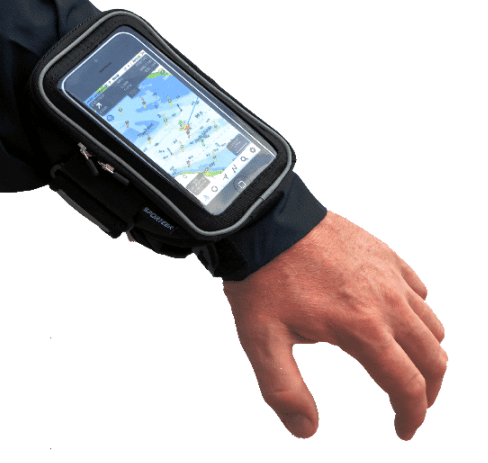Most music lovers would prefer to see a great band in a small club rather than a cavernous hall. The same can be said for a marine electronics show — a smaller room means more time to ask questions and explore new products. That’s one of the big appeals of the annual National Marine Electronics Association (NMEA) convention each year. A chance to talk with the major players in marine electronics. This year the convention and show was held in Ft. Myers, Fla. Plenty of interesting tech was on view. As is the case most years, the endless cycle of technological progress means that most of the gear was more evolutionary than revolutionary. Here’s a small sample:
PYI was exhibiting an interesting product called SoniHull (see image below). This is another take on an idea that has been around for awhile: oscillating units attached to the hull deigned to stop marine growth from attaching. The difference with this version of the idea, according to Dan Schalk of PYI, is bubbles. Tiny bubbles that are formed and then collapsed by ultrasnic energy. According to PYI’s website, the SoniHull “system works by producing multiple bursts of ultrasonic energy simultaneously in multiple frequencies, the energy creates a pattern of alternating positive and negative pressure. Microscopic bubbles are created from the negative pressure, while the positive pressure implodes them due to formations of vapor cavities known as cavitation.” So bursts of energy are reportedly better than a steady tone approach.
Actisense, a nimble marine electronics company that looks to provide needed tools for better on board networking, was showcasing its EMU-1 (see image below). This unit takes engine data from sensors on your diesel auxiliary, collects it and then outputs in NMEA 2000 format for a display and analysis. Much better than having only an analog tachometer to determine what’s going on with your boat‘s diesel.
What about wearable smartphones? Digital Yacht has a product called AquaWear (see image below). The WLN20 gateway streams data from on board instruments, GPS or AIS systems to your mobile device, wither it be iOS, Android, Mac or PC. Part of the AquaWear idea is to put your smartphone in a water resistant sleeve that you can wear on your arm. The WLN20 gateway provides the smartphone with data and it is right at your fingertips. Similar to the kneepad devices that aircraft pilots wear.
 |

